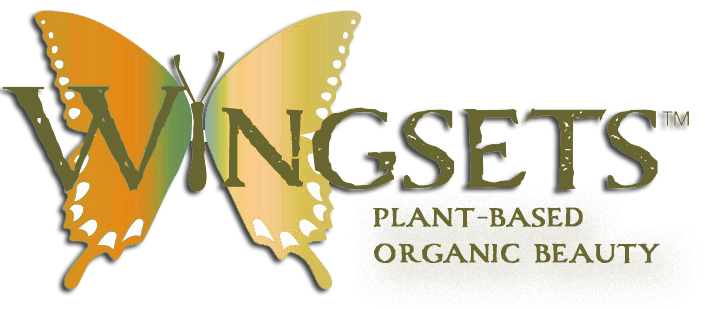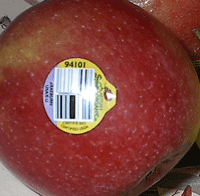I guess you thought I'd forgotten about finishing this vastly important information about vitamin D! Funny how life happens in the middle of deadlines - and, hopefully, you've done some sleuthing on your own and might be able to give me some pointers. If you've missed Part I and Part II, just follow the links. This part (III) is about our resources for Vitamin D. We will discuss in Part IV some of the disagreement and debate surrounding adequate serum levels for vitamin D. This is an issue that shouldn't be taken lightly and this is one of those times where just "listening to your doctor" might not be in your best interests - hey, but we'll get there in Part IV. Just saying, it's good to be informed before going to see the doctor. A good doctor will appreciate that.
Vitamin D, in a nutshell, Part III. What are our best sources?
Sunshine and Vitamin D:

Sunshine is considered to be our best source for vitamin D. That being said, obtaining adequate levels of sunshine is not necessarily easy or advisable. For those who live above 42° North latitude, the UVB wavelength is insufficient for skin absorption of vitamin D synthesis from November through February. And you're most likely asking where exactly would that be? Well, consider that to be above a line approximately between the northern border of California and Boston. And in even further northern latitudes their reduced availability of vitamin D through sunshine lasts for up to six months. There are other factors to consider such as amount of melanin in skin, fat storage and others - yep, that will be in Part IV.
Now for our Southern friends in the United States who live in latitudes below 34° north, there is enough UVB to obtain vitamin D through sunshine exposure throughout the year. This latitude would represent a line between Los Angeles and Columbia, South Carolina. However, complete cloud cover reduces UV energy by 50% and shade or smog, reduces it by 60%. Sunscreens with a sun protection factor (SPF) of eight or more can block any vitamin D producing UV rays. It actually requires a wavelength of 290 -- 315 nm to obtain adequate vitamin D. In practical terms, it would require approximately 5 to 30 minutes of sun exposure between 10 AM and 3 PM at least twice a week to the face, arms, legs or back. And I'm sure you've noted this is also the hours that we've been told by cancer authorities to stay out of the sun. Enchanted Learning has provided us with a map that gives a close estimation of the USA in terms of latitudes. For those who want an exact latitude and longitude of where they live or where they are going to vacation, or for our friends outside of the USA, follow this link.

Tanning Beds and Vitamin D:
I have to say right out, I'm not a proponent of tanning beds. That being said, I'm reporting to you that my research shows commercial tanning beds that emit 2% to 6% UVB radiation can be effective. The issues surrounding sun exposure and tanning beds is not going to be discussed in this article. Except to say it is obviously a good idea to limit exposure of skin to sunlight and UV radiation from tanning beds, as UV radiation is a known carcinogen responsible for most of the estimated 1.5 million skin cancers, and the 8000 deaths due to metastatic melanoma that occur annually in the United States alone. For me personally, I love sitting in the sun. I love working in the garden, I love reading and watching wildlife (okay, a couple rabbits, frogs, birds, squirrels) from my deck. My solution, albeit not necessarily the best, nor one that I am recommending for you, is not to use sunscreen products (mainly because most of them are laden with chemicals) for at least 2 days a week and for 20 minutes each of those days. I also would suggest that you definitely limit exposure of your face to direct sunlight without protection. I prefer real sunshine, but I do, however, protect my face with a large floppy hat or wide brimmed cap. Let it be said, the American Academy of Dermatology advises the use of what they call “photo protective measures”, including the use of sunscreen whenever exposed to the sun.
Food Sources of Vitamin D:
Obviously, for those who live in one of those places where there is not enough sunshine to emit the wavelength of UVB required to trigger Vitamin D synthesis, it is essential to find other ways to build up our serum levels of this very important vitamin.
- Fortified foods - very few foods contain vitamin D naturally. Vitamin D is fortified in the USA in formula and whole milk, and in some cereals. This helps, of course, but is not adequate for the levels necessary as discussed in the research I've done.
- Fish oil- if you are not a vegetarian or worried about toxins in our seas, fish, such as salmon, tuna, mackerel and fish liver oils are some sources. This is great if you have availability to a toxin-free source of fish, but for most of us this isn't an option. Alaskan salmon from most reports is one of the cleanest fish you can eat at this point in time. Vitamin D can be found in cod liver oil - again, make sure the brand you are using is of the highest quality and you will have to do some of your own research to determine which brands to purchase. One tablespoon of cod liver oil contains 1,360 IU of vitamin D. Consumerlab.com has good information in this area of disclosing which brands we should be purchasing.
- Mushrooms - some mushrooms provide Vitamin D2 (ergocalciferol), but in varying amounts and only when enhanced with Vitamin D from being exposed to ultraviolet light for this specific reason.
Supplements for Vitamin D:

Both Vitamin D2 and D3 are available in over-the-counter supplements, but only Vitamin D2 is available in pharmacological preparations - according to the Office of Dietary Supplements. After reading this, I subsequently did some interviewing of friends, family and clients who have recently received a prescription from their doctors for 50,000 IU of Vitamin D3 - it's been a long winter here in the USA. One was told to take 50,000 IU twice a week and the other was told to take it once a week, obviously depending upon their own level of deficiency. Of course, "prescriptions" can apply to over-the-counter vitamins as well as pharmacological preparations. Obviously the issue is does your doctor really know how much to recommend for you or have they bothered to measure these levels. This situation has improved and is improving daily as more and more research is being released about the importance of adequate Vitamin D levels. We will discuss this further in Part IV. Reportedly the "gold standard" for determining vitamin D status in humans is a serum level of 25-hydroxyvitamin D. Personally, I think we all should have our levels checked. Many of the diseases and disorders mentioned in Part II, are what we call "silent diseases", which means you probably won't know you are developing these diseases until symptoms are irreversible.
The debate is heating up about whether to supplement with Vitamin D2 or D3. Many supplements are being formulated to contain Vitamin D3, but now new research is debating which one is better. Bottom line, both forms effectively raise serum 25 (OH) D levels. Vitamin D supplements are both affordable and safe, even at levels more than ten times the current U.S.RDA (another discussion for another day as these levels are minimums and mostly outdated.)
In Part IV we will examine the debate surrounding which type of Vitamin D, how much is enough and why, and how much is too much and why. We will also look at some cautions concerning medications and vitamin D supplementation.
Thanks for listening! Comments, suggestions or personal experiences are greatly appreciated.
Ann
Disclaimer:
I am recounting to you my summary of the research articles, online discussions by medical professionals and information from governmental information sites. References and resources are many and will be included at the end of this series. I am absolutely not diagnosing or prescribing. Please read our general disclaimer for the website.
Copyright © 2003-2010 by Wingsets. All Rights Reserved. Wingsets, Bugz Off, and Wingsets Aromatherapy logo and blog are registered trademarks of Wingsets. We welcome the sharing of this information with due credit given to Wingsets and myself. No part of this blog or our website may be duplicated or incorporated into other work without written permission.






















